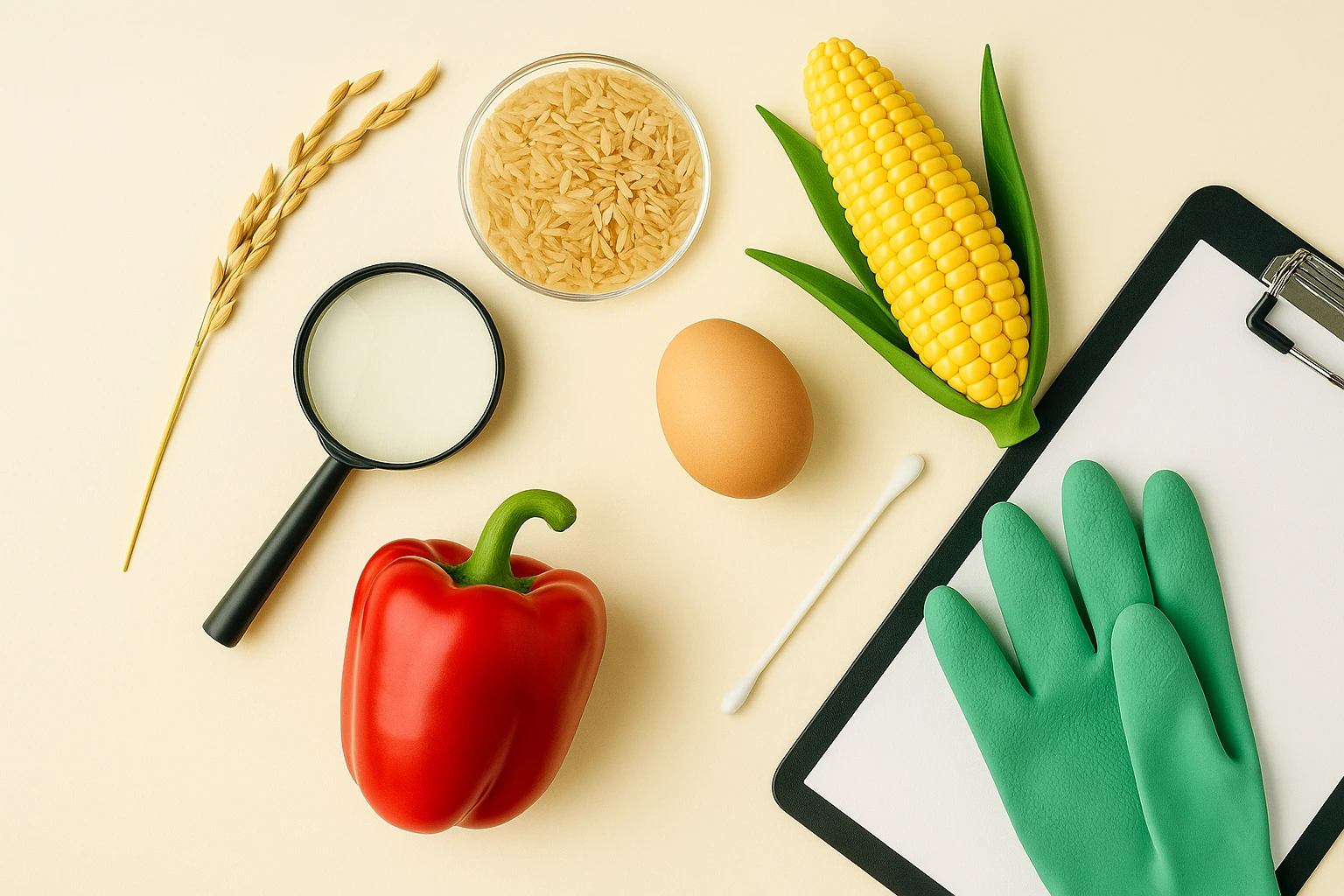Poultry Safety Certification
The certification of poultry safety is a crucial aspect in ensuring that consumers receive high-quality and safe products. This service ensures that all aspects of the production, processing, and handling of poultry meet internationally recognized standards for food safety.
In the context of Food & Agriculture Certifications, Poultry Safety Certification is particularly important due to the global demand for safe and hygienic meat products. The certification process involves rigorous testing and inspection at every stage, from farm-to-table. This ensures that consumers can trust the quality and safety of the food they consume.
The certification covers a wide range of parameters including microbiological safety, chemical residues, physical contaminants, and proper handling practices. Microbiological testing is conducted to identify harmful bacteria such as Salmonella and Campylobacter. Chemical residue analysis ensures that no illegal or excessive amounts of antibiotics, pesticides, or other chemicals are present in the meat. Physical contaminant checks focus on identifying foreign objects like feathers or bones.
The process begins with sample collection from various stages of production including live bird inspection, carcass splitting, and final product packaging. Each sample is processed according to specific protocols designed by international standards such as ISO 17025 for laboratory competence. Following processing, the samples are analyzed using advanced instrumentation like PCR machines for microbiological testing or gas chromatography-mass spectrometry (GC-MS) for chemical analysis.
The results of these tests form the basis of the certification report which provides detailed information on all aspects tested. This transparency allows stakeholders in the supply chain to make informed decisions about product quality and safety. Compliance officers, quality managers, R&D engineers, and procurement personnel can use this data to continuously improve their processes.
By adhering strictly to internationally recognized standards like ISO 17025 and ISO 14001 for environmental management systems, our laboratory ensures that certification is both robust and reliable. Our approach not only meets but exceeds the expectations set by these standards, providing peace of mind to all parties involved.
- Microbiological testing
- Chemical residue analysis
- Physical contaminant checks
- Laboratory competence according to ISO 17025
- Environmental management systems following ISO 14001
Applied Standards
The applied standards for Poultry Safety Certification are designed to ensure that the certification process is consistent and reliable across different regions and laboratories. The primary standard used in this service is ISO 17025, which sets out requirements for the competence of testing and calibration laboratories.
ISO 17025 ensures that all laboratory practices meet stringent quality criteria, including proficiency testing programs, internal audits, and continuous improvement initiatives. This standard guarantees accurate results and reliable data, which are essential for maintaining high standards in poultry safety certification.
In addition to ISO 17025, other relevant international standards include:
- ISO 9001: Quality Management Systems
- ISO 14001: Environmental Management Systems
- ASTM E536: Standard Practice for Poultry Meat Inspection
- EN 17821: Hygienic Processing of Animal By-Products
- IEC 62795: Safety of Laboratory Equipment and Facilities
These standards provide a framework within which our laboratory operates, ensuring that the certification process is both comprehensive and rigorous. Compliance with these standards helps to build trust among consumers and stakeholders in the food supply chain.
Benefits
The benefits of obtaining Poultry Safety Certification are numerous and far-reaching. For producers, it provides a competitive edge by demonstrating commitment to quality and safety. It also helps to build consumer trust, which is vital in today's market where food safety is a top concern.
- Enhanced reputation: Producers who obtain this certification can enhance their brand image and gain credibility with consumers
- Increased sales: With increased trust comes higher demand for the product
- Compliance with regulations: Compliance ensures that all practices are up-to-date with current legal requirements
- Improved efficiency: The certification process encourages best practice which can lead to operational improvements
- Risk management: Identifying and addressing potential issues before they become problems saves time and money in the long run
- Customer satisfaction: Ensuring that products meet high safety standards leads directly to happier customers
In summary, Poultry Safety Certification is an investment in both reputation and success. It provides a clear pathway for producers to demonstrate their commitment to quality and safety.
Environmental and Sustainability Contributions
The process of Poultry Safety Certification contributes significantly to environmental sustainability by promoting efficient use of resources and minimizing waste. By ensuring that all stages of poultry production meet strict hygiene and safety standards, the certification helps reduce contamination risks which can lead to unnecessary disposal and resource consumption.
- Minimizes contamination: Ensures that only safe products reach market reducing risks associated with contaminated food
- Promotes efficient use of resources: Encourages best practices in resource management throughout the production process
- Reduces waste: By identifying and addressing issues early, it minimizes the need for reprocessing or disposal of unsuitable products
- Fosters sustainable farming practices: Encourages farmers to adopt methods that are environmentally friendly while still maintaining high standards of safety
The certification also supports broader sustainability goals by encouraging transparency and accountability in the supply chain. This helps to build trust between producers, processors, retailers, and consumers, fostering a more responsible approach to food production.





